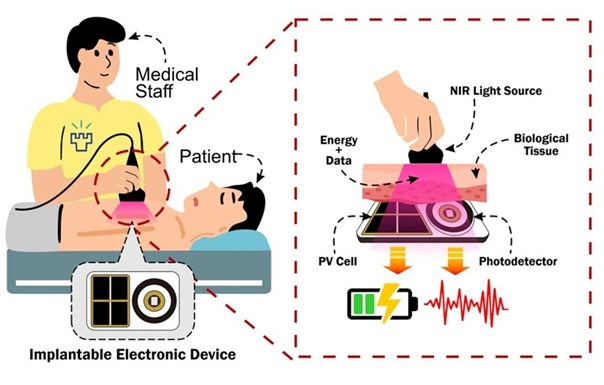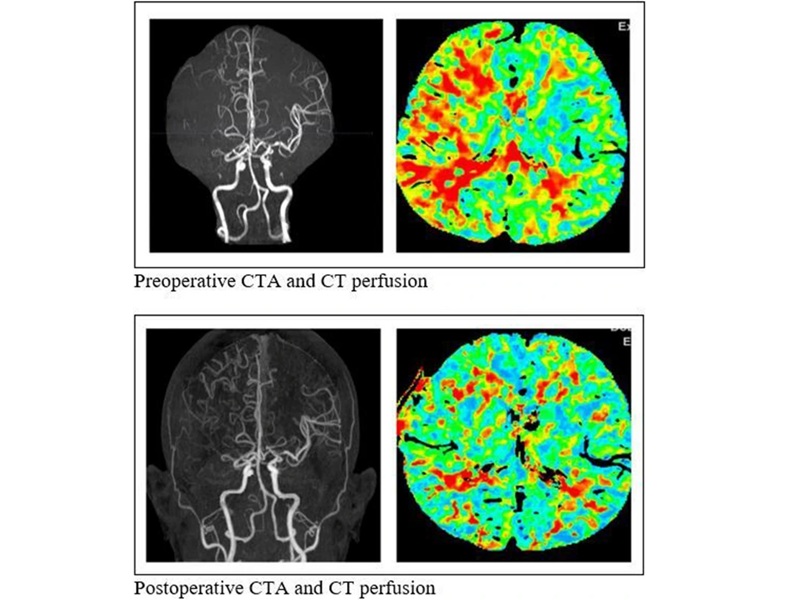Increased Diabetes Prevalence Due to Medical Advances
|
By HospiMedica International staff writers Posted on 17 May 2016 |
A new study has concluded that the global increase in type 1 diabetes (T1D) mellitus is directly linked to reduced natural selection resulting from improved medical care.
Researchers at the University of Adelaide (UA; Australia) and the University of Zurich (UZH; Switzerland) examined the prevalence of T1D in 118 countries and concurrent changes in life expectancy from 1950 to 2010 to test correlation of T1D to reduced natural selection, as measured by the Biological State Index. To do so, they first obtain country-specific estimates of T1D prevalence, life expectancy, obesity prevalence rate, urbanization rates, per capita sugars consumption, and per capita gross domestic product (GDP).
The data obtained were then matched to T1D prevalence in all the countries, which were also grouped to study associations in different geographical regions. After applying the Biological State Index to the data, they found that the rapid worldwide increase in T1D over the last few decades was directly linked with increases in human life expectancy, especially in Western countries, and therefore a reduction in natural selection. The study was published on March 2, 2106, in BMJ Open Diabetes Research & Care.
“The current prevailing paradigm on the increasing prevalence of T1D is that environmental pressures are now able to trigger genotypes. Currently, medical gene intervention in modern medicine at this stage cannot remove T1D genes, and eugenics can offer no direction due to ethics issue,” concluded study co-author Wen-Peng You, PhD, of UA. “Study of T1D epidemiology based on prevalence/incidence T1D data of all age groups has become imperative, as it may offer optimal solution to address, or at least slow down, T1D genetic load increases in different populations.”
“Natural selection is one of the major evolutionary forces that inform changes in our genes, across populations and over generations. This is the first major disease we have shown that is accumulating due to a relaxation of natural selection over time,” said study co-author Professor Maciej Henneberg, PhD, of UA and UZH. “It's unlikely this situation will ever be reversed, meaning that in order to overcome the problems associated with type 1 diabetes for our population, some form of gene therapy to repair the faulty genes may need to be considered.”
Natural selection, one of the basic mechanisms of evolution, is the differential survival and fertility of individuals due to differences in phenotype that reflect genetic differences. In modern society, natural selection still acts on all members of a population, selecting those that have an increased reproductive success due to survival and/or fertility. The Biological State Index takes into account potential loss of reproductive success by dying at an earlier age. The effect of natural selection on contemporary populations is declining due to modern medicine.
Related Links:
University of Adelaide
University of Zurich
Researchers at the University of Adelaide (UA; Australia) and the University of Zurich (UZH; Switzerland) examined the prevalence of T1D in 118 countries and concurrent changes in life expectancy from 1950 to 2010 to test correlation of T1D to reduced natural selection, as measured by the Biological State Index. To do so, they first obtain country-specific estimates of T1D prevalence, life expectancy, obesity prevalence rate, urbanization rates, per capita sugars consumption, and per capita gross domestic product (GDP).
The data obtained were then matched to T1D prevalence in all the countries, which were also grouped to study associations in different geographical regions. After applying the Biological State Index to the data, they found that the rapid worldwide increase in T1D over the last few decades was directly linked with increases in human life expectancy, especially in Western countries, and therefore a reduction in natural selection. The study was published on March 2, 2106, in BMJ Open Diabetes Research & Care.
“The current prevailing paradigm on the increasing prevalence of T1D is that environmental pressures are now able to trigger genotypes. Currently, medical gene intervention in modern medicine at this stage cannot remove T1D genes, and eugenics can offer no direction due to ethics issue,” concluded study co-author Wen-Peng You, PhD, of UA. “Study of T1D epidemiology based on prevalence/incidence T1D data of all age groups has become imperative, as it may offer optimal solution to address, or at least slow down, T1D genetic load increases in different populations.”
“Natural selection is one of the major evolutionary forces that inform changes in our genes, across populations and over generations. This is the first major disease we have shown that is accumulating due to a relaxation of natural selection over time,” said study co-author Professor Maciej Henneberg, PhD, of UA and UZH. “It's unlikely this situation will ever be reversed, meaning that in order to overcome the problems associated with type 1 diabetes for our population, some form of gene therapy to repair the faulty genes may need to be considered.”
Natural selection, one of the basic mechanisms of evolution, is the differential survival and fertility of individuals due to differences in phenotype that reflect genetic differences. In modern society, natural selection still acts on all members of a population, selecting those that have an increased reproductive success due to survival and/or fertility. The Biological State Index takes into account potential loss of reproductive success by dying at an earlier age. The effect of natural selection on contemporary populations is declining due to modern medicine.
Related Links:
University of Adelaide
University of Zurich
Latest Critical Care News
- Ultra-Stable Mucus-Inspired Hydrogel Boosts Gastrointestinal Wound Healing
- E-Tattoos Harvest Energy and Monitor Health in Real Time
- Focused Ultrasound Tricks Tumors into Marking Themselves for Destruction
- World's Smallest Programmable Robot Opens Up New Possibilities in Medicine
- Remote Ventilate View Platform Enables Real-Time Monitoring of Patient-Ventilator Asynchrony
- Soft “Cyborg” Cardiac Patches Improve Stem Cell Heart Repair
- Soft Wearable System Offers Continuous Wireless Monitoring of Neonatal Health
- AI-Enhanced Wearables Could Transform Type 2 Diabetes and Prediabetes Care
- Breathable Electronic Skin Paves Way for Next-Generation Wearable Devices
- AI Transforming Colon Cancer Diagnosis
- Ventricular Assist Device Offers Long-Term Use in Children Waiting for Donor Heart
- Precision Approach Improves Immunotherapy Effectiveness for ICU Patients with Sepsis
- Soft Robots Could Donate Their Heart to Humans
- Bioadhesive Strategy Prevents Fibrosis Around Device Implants on Peripheral Nerves
- Miniature Non-Invasive Robotic Catheters to Improve Infertility Treatments
- Stick-On Patch Monitors Baby's Movements In Utero
Channels
Surgical Techniques
view channel
NIR Light Enables Powering and Communicating with Implantable Medical Devices
Implantable medical devices rely on wireless communication and long-lasting power sources to function safely inside the body, yet existing radio-based methods raise concerns around security, interference,... Read more
Simple Bypass Protocol Improves Outcomes in Chronic Cerebral Occlusion
Chronic cerebral arterial occlusion and moyamoya disease are major causes of ischemic stroke, particularly in regions where access to advanced diagnostic tools is limited. Assessing cerebral blood flow... Read morePatient Care
view channel
Revolutionary Automatic IV-Line Flushing Device to Enhance Infusion Care
More than 80% of in-hospital patients receive intravenous (IV) therapy. Every dose of IV medicine delivered in a small volume (<250 mL) infusion bag should be followed by subsequent flushing to ensure... Read more
VR Training Tool Combats Contamination of Portable Medical Equipment
Healthcare-associated infections (HAIs) impact one in every 31 patients, cause nearly 100,000 deaths each year, and cost USD 28.4 billion in direct medical expenses. Notably, up to 75% of these infections... Read more
Portable Biosensor Platform to Reduce Hospital-Acquired Infections
Approximately 4 million patients in the European Union acquire healthcare-associated infections (HAIs) or nosocomial infections each year, with around 37,000 deaths directly resulting from these infections,... Read moreFirst-Of-Its-Kind Portable Germicidal Light Technology Disinfects High-Touch Clinical Surfaces in Seconds
Reducing healthcare-acquired infections (HAIs) remains a pressing issue within global healthcare systems. In the United States alone, 1.7 million patients contract HAIs annually, leading to approximately... Read moreHealth IT
view channel
EMR-Based Tool Predicts Graft Failure After Kidney Transplant
Kidney transplantation offers patients with end-stage kidney disease longer survival and better quality of life than dialysis, yet graft failure remains a major challenge. Although a successful transplant... Read more
Printable Molecule-Selective Nanoparticles Enable Mass Production of Wearable Biosensors
The future of medicine is likely to focus on the personalization of healthcare—understanding exactly what an individual requires and delivering the appropriate combination of nutrients, metabolites, and... Read moreBusiness
view channel
Philips and Masimo Partner to Advance Patient Monitoring Measurement Technologies
Royal Philips (Amsterdam, Netherlands) and Masimo (Irvine, California, USA) have renewed their multi-year strategic collaboration, combining Philips’ expertise in patient monitoring with Masimo’s noninvasive... Read more
B. Braun Acquires Digital Microsurgery Company True Digital Surgery
The high-end microsurgery market in neurosurgery, spine, and ENT is undergoing a significant transformation. Traditional analog microscopes are giving way to digital exoscopes, which provide improved visualization,... Read more
CMEF 2025 to Promote Holistic and High-Quality Development of Medical and Health Industry
The 92nd China International Medical Equipment Fair (CMEF 2025) Autumn Exhibition is scheduled to be held from September 26 to 29 at the China Import and Export Fair Complex (Canton Fair Complex) in Guangzhou.... Read more















